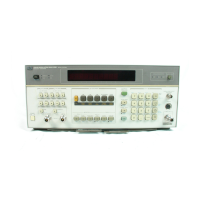Service
Model
8901B
%ble
8A-6.
Schematic Diagram Notes
(4
of
11)
9p
.c
+
4
3-
DIGITAL
SYMBOLOGY
REFERENCE INFORMATION
Input and Output Indicators
Implied Indicator-Absence
of
polarity indicator (see below) implies that the active
state is a relative high voltage level. Absence of negation indicator (see below) im-
plies that the active State is a relative high voltage level at the input or output.
Polarity Indicator-The active state is a relatively low voltage level.
Dynamic Indicator-The active state is a transition from a relative low to a relative
high voltage level.
Inhibit Input-Input that, when active, inhibits (blocks) the active state outputs of a
digital device.
Analog Input-Input that is a continuous signal function (e.g., a sine wave).
Polarity Indicator used with Inhibit Indicator-Indicates that the relatively low level
signal inhibits (blocks) the active state outputs of a digital device.
Output Delay-Binary output changes state only after the referenced input
(rn)
re-
turns to its inactive state
(rn
should be replaced by appropriate dependency or func-
tion symbols).
Open Collector Output.
Open Emitter Output.
Three-state Output-Indicates outputs can have a high impedance (disconnect) state
in
addition to the normal binary logic states.
8A-13

